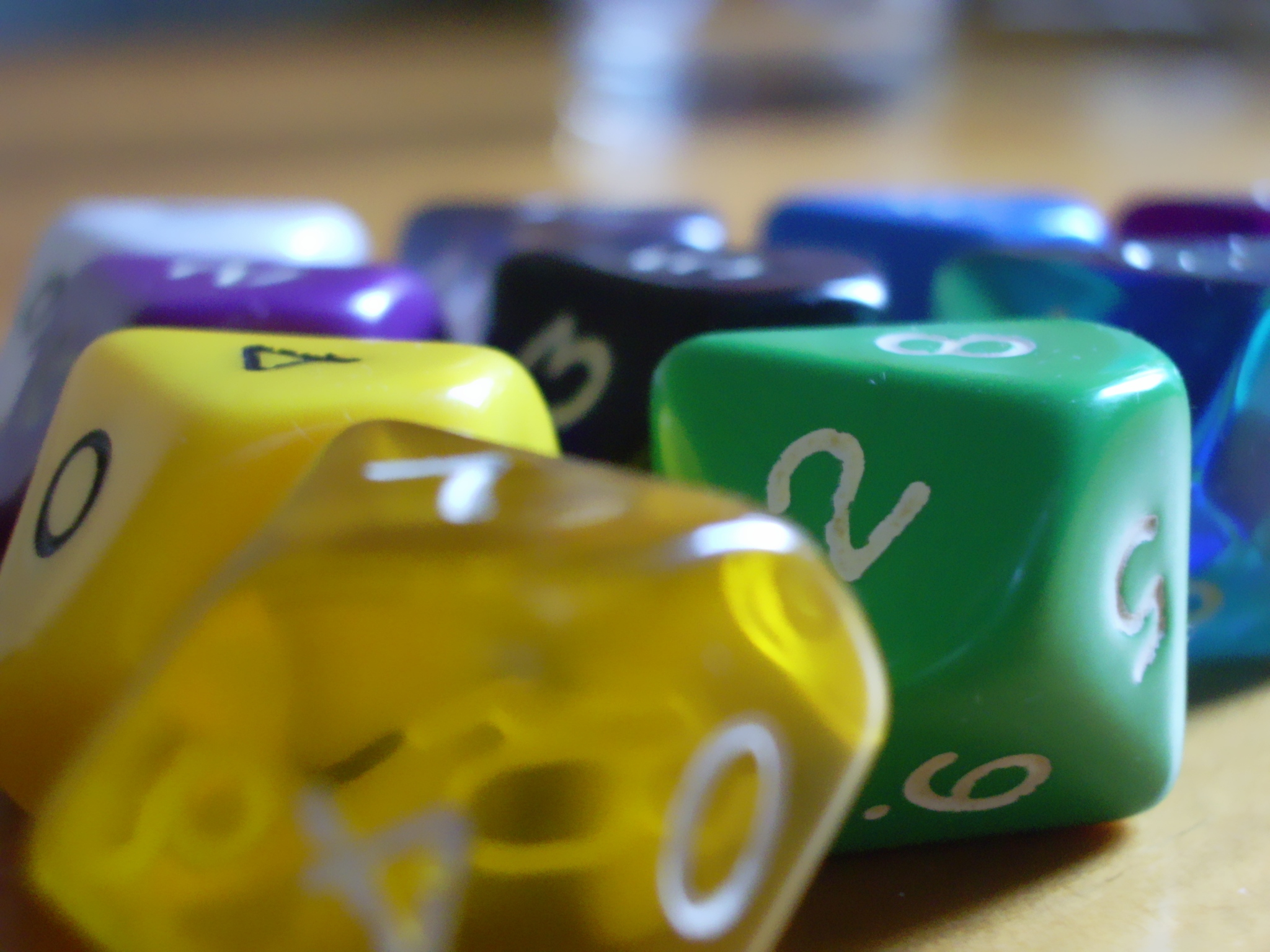Pentagonal trapezohedron on:
[Wikipedia]
[Google]
[Amazon]
In
 The pentagonal trapezohedron was patented for use as a gaming die (i.e. "game apparatus") in 1906. These dice are used for role-playing games that use
The pentagonal trapezohedron was patented for use as a gaming die (i.e. "game apparatus") in 1906. These dice are used for role-playing games that use

Generalized formula of uniform polyhedron (trapezohedron) having 2n congruent right kite faces
from Academia.edu *
Virtual Reality Polyhedra
www.georgehart.com: The Encyclopedia of Polyhedra ** VRMLbr>model
*
Try: "dA5" {{Polyhedron navigator Dice Polyhedra sv:Tärning#Tiosidig tärning
geometry
Geometry (; ) is, with arithmetic, one of the oldest branches of mathematics. It is concerned with properties of space such as the distance, shape, size, and relative position of figures. A mathematician who works in the field of geometry is c ...
, a pentagonal trapezohedron
In geometry, an trapezohedron, -trapezohedron, -antidipyramid, -antibipyramid, or -deltohedron is the dual polyhedron of an antiprism. The faces of an are congruent and symmetrically staggered; they are called ''twisted kites''. With a hi ...
or deltohedron is the third in an infinite series of face-transitive polyhedra which are dual polyhedra to the antiprisms. It has ten faces (i.e., it is a decahedron) which are congruent kites.
It can be decomposed into two pentagonal pyramid
In geometry, a pentagonal pyramid is a pyramid with a pentagonal base upon which are erected five triangular faces that meet at a point (the apex). Like any pyramid, it is self- dual.
The ''regular'' pentagonal pyramid has a base that is a r ...
s and a pentagonal antiprism in the middle. It can also be decomposed into two pentagonal pyramids and a dodecahedron in the middle.
10-sided dice
 The pentagonal trapezohedron was patented for use as a gaming die (i.e. "game apparatus") in 1906. These dice are used for role-playing games that use
The pentagonal trapezohedron was patented for use as a gaming die (i.e. "game apparatus") in 1906. These dice are used for role-playing games that use percentile
In statistics, a ''k''-th percentile (percentile score or centile) is a score ''below which'' a given percentage ''k'' of scores in its frequency distribution falls (exclusive definition) or a score ''at or below which'' a given percentage fall ...
-based skills; however, a twenty-sided die can be labeled with the numbers 0-9 twice to use for percentages instead.
Subsequent patents on ten-sided dice have made minor refinements to the basic design by rounding or truncating the edges. This enables the die to tumble so that the outcome is less predictable. One such refinement became notorious at the 1980 Gen Con when the patent was incorrectly thought to cover ten-sided dice in general.
Ten-sided dice are commonly numbered from 0 to 9, as this allows two to be rolled in order to easily obtain a percentile result. Where one die represents the 'tens', the other represents 'units' therefore a result of 7 on the former and 0 on the latter would be combined to produce 70. A result of double-zero is commonly interpreted as 100. Some ten-sided dice (often called 'Percentile Dice') are sold in sets of two where one is numbered from 0 to 9 and the other from 00 to 90 in increments of 10, thus making it impossible to misinterpret which one is the tens and which the units die. Ten-sided dice may also be numbered 1 to 10 for use in games where a random number in this range is desirable, or the zero may be interpreted as 10 in this situation.
A fairly consistent arrangement of the faces on ten-digit dice has been observed. If one holds such a die between one's fingers at two of the vertices such that the even numbers are on top, and reads the numbers from left to right in a zigzag pattern, the sequence obtained is 0, 7, 4, 1, 6, 9, 2, 5, 8, 3, and back to 0. The even and odd digits are divided among the two opposing "caps" of the die, and each pair of opposite faces adds to nine.
As seen in the green die on the image, most d10's manufactured today have a square cross section.
Spherical tiling
The pentagonal trapezohedron also exists as a spherical tiling, with 2 vertices on the poles, and alternating vertices equally spaced above and below the equator. :
See also
References
Sources
*External links
Generalized formula of uniform polyhedron (trapezohedron) having 2n congruent right kite faces
from Academia.edu *
Virtual Reality Polyhedra
www.georgehart.com: The Encyclopedia of Polyhedra ** VRMLbr>model
*
Try: "dA5" {{Polyhedron navigator Dice Polyhedra sv:Tärning#Tiosidig tärning